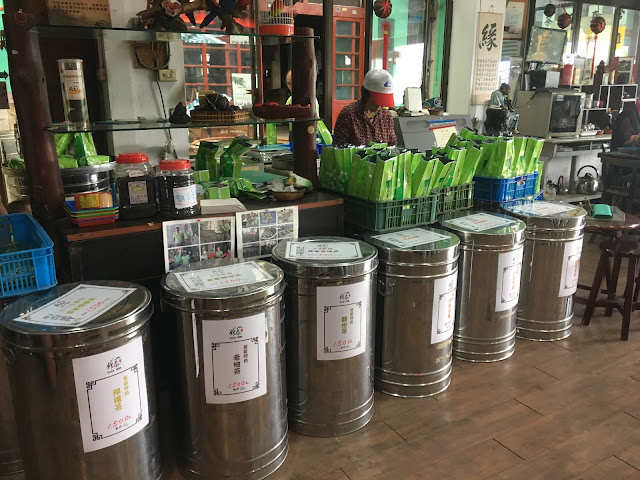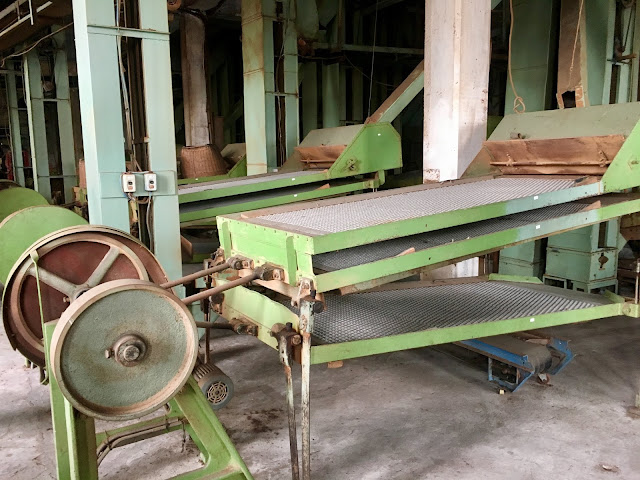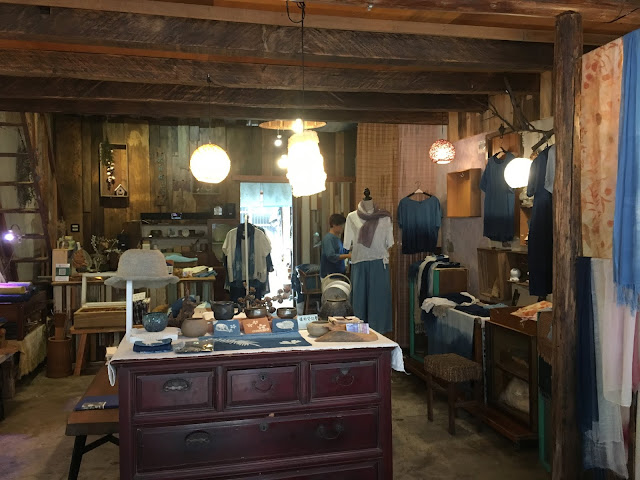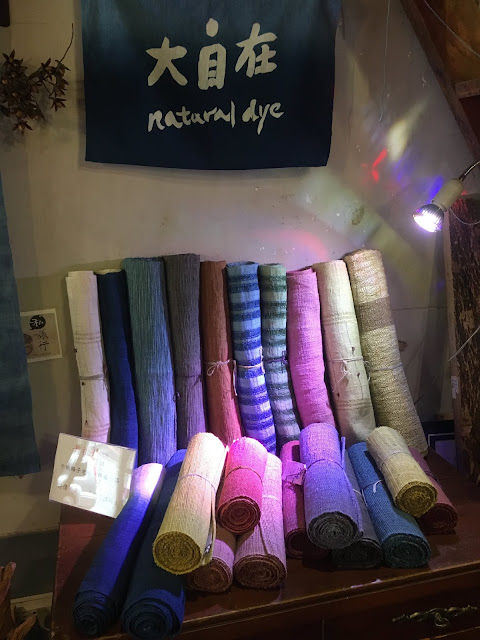Lately, we visited a tea factory in Emei, and this time we are traveling to Guanxi to visit the Jintai tea factory. In the shop, you can see many different kinds of tea. However, the tea is not currently made there, but you can still see the old factory with plenty of machines. You can also observe people packing tea leaves and find some Hakka fruit tea. Inside the factory, there is a movie that can be watched (although it wasn't playing when we visited) and some old pictures. Unfortunately, the information provided there is only in Chinese, unlike the Fuxing Tea Factory in Emei. Not far from this location, there is also the Museum of Tea established.
Jintai Tea Factory (錦泰茶業股份有限公司)
Jintai Tea Factory is a long-established tea factory in Guanxi, known for producing Oriental Beauty Tea, Lei Cha, and fruit tea, which are three of the most famous Hakka teas. Guanxi is a town in Hsinchu County. In 1793, during the Qing Dynasty, immigrants first came here attracted by the mountains and rivers, and they named it "Mili Zhuang." In 1823, a new street was built. In the 1920s, the Japanese government changed its name to "Kansaizhuang." Tea cultivation began in the Hsinchu area in 1876. The environment and climate in Kansai were suitable for tea growth, and it became a significant tea production area, becoming a symbolic industry for the Hakka community.
Jintai Tea Industry Co., Ltd. (formerly known as Jintai Tea Factory) was established in 1936 by the family's first grandfather, Luo Jinxi. The equipment used in Jintai Tea Factory is over 70 years old. During the Japanese occupation, more than 50 employees worked here 24 hours a day, producing around 50,000 kg of raw tea. The finished tea was exported to numerous port cities abroad. To support the hard-working employees, the factory even set up a rice mill to produce a large amount of rice, which won a grand prize. It is one of the representative tea factories, known for its large output and high-quality products. In 1937, the factory was awarded the second prize in the Hsinchu County Black Tea Competition. In the early 1940s, it received the "Dragon Bird Taste" award from the renowned Concord Bank of Taipei. Additionally, it won the special prize in the tea sanitation facilities competition among the 12 provinces.
In 1938, the new Guanxi Factory was founded. The original location of Jintai Tea Factory was situated next to the restaurant of Guanyulou. As business boomed, there was a need for more production space. Many cultural relics and literary materials dating back 70 years have been carefully preserved and are displayed in an orderly manner. After the completion of the new plant, the old-fashioned machines purchased 70 years ago were not sufficient, so a large number of additional machines were added. The scale of the entire factory was increased by at least three times to improve production efficiency. The longstanding Jintai factory covers an area of approximately 5,000 pings.
As the tea industry in the Kansai region gradually declined due to the reduction of tea gardens, Mr. Luo Jinxi began to plan for the future. On November 13, 1991, the company transformed into a tourism-oriented establishment and established a domestic R&D department to promote the development of black tea, green tea, and health fruit teas. These include sour citrus tea, lemon tea, mountain bitter gourd tea, and other innovative and uniquely researched tea series. Combining traditional technology from the Tang and Song dynasties with modern science and technology, the company strives to bring out the characteristics and essence of various teas. For instance, they use longan charcoal to roast alpine oolong tea, reducing bitterness and astringency, and developing various charcoal-roasted teas with special aromas. Such roasting techniques are rare in the tea industry.
The company's factory building preserves many precious and complete tea-making equipment from earlier years. It also preserves numerous historical materials and has been adapted to meet public requirements. In November 2002, it was transformed into the Kansai Jintai Sightseeing Tea Factory, and the Jintai Tea Cultural Relics Museum was established. The factory has been listed as a cultural monument for the history of tea.
See also: Fuxing Tea Factory
Hakka-style tea
One of the Hakka fruit teas is Bitter Orange Tea, made from Huton Gan, a large-sized bitter citrus fruit. This fruit is often used as decoration during Chinese New Year, but its bitter flavor prevents it from being used for consumption. The fruit is cleaned from the inside, and tea is placed in the cavity. The fruit tea has a sweet, slightly sour, and bitter taste. It undergoes a process of nine steaming and nine drying, which takes about half a year to complete. This tea has a unique flavor due to long-term air drying, contains no added preservatives, and is less prone to foaming compared to regular tea.
Another famous tea is Lei Cha (Pounded Tea). According to legend, during the Three Kingdoms period, soldiers were infected by a plague. An old herbal doctor used raw tea, rice, and ginger mixed with boiling water to make tea, which helped the soldiers regain their health. Nowadays, Lei Cha can be served as a beverage or as a dessert. Various ingredients can be added, such as sesame, red beans, soybeans, barley, lotus seeds, or pumpkin.
Roasted oolong tea is made using charcoal roasting. The tea's color changes to brown oolong tea during the baking process. The resulting tea has an amber-colored infusion, a strong taste, and a unique aroma. It has the effect of removing greasiness, aiding digestion, relieving drunkenness, and is particularly suitable for consumption after an oily meal.
See also: History of tea
See also: How to order tea in Chinese
Guanxi Old Street (關西老街)
Guanxi Street was originally called Guanxi Zhuang and was established in 1920. The houses on Guanxi Old Street are mostly two-story buildings with Baroque-style facades. Normally, Old Streets are bustling with visitors during weekends, but we didn't see many when we visited. Here, you can find shops like a century-old bookstore, which is said to have a collection of 3,000 books. There is also a clothing store that uses natural dyes and a teahouse.
You can also explore the historical alley, which is full of memories. This narrow alley, which has existed for more than 100 years, used to be a shortcut to the Dongtai Theatre, where many young people watched movies and shared their love stories. It holds indelible memories of past generations. The aim was to recreate the atmosphere of this narrow alley in today's life, allowing young people to experience its history and enjoy a unique and comfortable walking experience. While walking along this alley, you can see paintings on the ground and stories written on the walls. The theatre building appears quite dilapidated now, but you can find a QR code on the building that links to a video about Guanxi.





























Amazing. I like tea and I'm interested in how different teas variety are gathered and produced. Never heard about Bitter Orange! So, my next trip to Taiwany - teas plantations! Thanks for let me to discover that interesting part of teas' history. Dziekuje i na pewno poprosze o rade przy organizowaniu mojego pobytu w 2020😃
ReplyDeleteStaram się wyszukać mniej znane miejsca i tradycje. Przed odwiedzeniem tego miejsca, też nie miałam pojęcia o Bitter Orange Tea.
DeleteZapraszam do kontaktu przez facebook, z przyjemnością pomogę :)